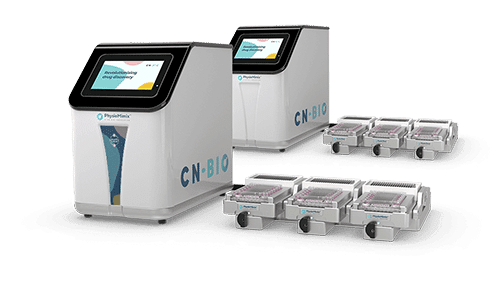London, UK, 19 July 2018: CN Bio Innovations Limited today announced that its Board of Directors has accepted the resignation of Dr Emma Sceats as CEO and Director of CN Bio and appointed Dr David Hughes as Chief Executive Officer effective immediately.
Dr Hughes has been centrally involved in the licensing and commercialisation of CN Bio’s products and technologies, led the company’s participation in a five year $26M DARPA contract to build a human Body-on-a-Chip awarded to the Massachusetts Institute of Technology and CN Bio, and oversaw development of the company’s flagship PhysioMimix® Organs-on-Chips system, launched in May 2018. Dr Hughes has been Chief Technical Officer and since 2015 an Executive Director of CN Bio.
“I’d like to thank Emma for her leadership and tireless commitment to CN Bio and wish her all the best in her new endeavours” said Dr Hughes. “Organs-on-Chips are a game-changing technology that are revolutionising our understanding of how new drugs, food additives, cosmetics and chemicals affect the key organs in our bodies. We had a vision to develop PhysioMimix® as a highly usable, flexible and compact lab instrument so that labs around the world could access the benefits of these human organ models for their own research. To see PhysioMimix devices installed with customers is a realisation of our vision. I’m delighted to be leading CN Bio in this new chapter, focusing on accelerating the innovation and execution that our customers need from us.”
Maureen Coleman, Chairman of CN Bio Innovations’ Board of Directors, said “David’s deep knowledge of the fast emerging field of Organs-on-Chips and the strategic, commercial and leadership acumen he has demonstrated as a Director and CTO made him the best choice to lead our company into its next stage. CN Bio’s Board and investors are delighted he has accepted the position.”
Dr Hughes joined CN Bio Innovations in 2010 as Head of Engineering and was promoted to CTO in 2013. Before joining CN Bio, he worked in manufacturing and research and development at GlaxoSmithKline. Dr Hughes holds a Masters in Engineering Science and a Doctorate in Chemical Engineering from the University of Oxford.
———– ENDS ———-
About CN Bio Innovations
CN Bio Innovations develops devices that boost the precision and speed of biological research. By predicting the effects chemical and biological substances will have on human organs, researchers can fast-track improvements in healthcare. In the past 4 years CN Bio has worked on more than 25 projects with pharmaceutical partners, using our Organs-on-Chips and related microfluidic devices to gather precise, human-relevant data. In 2017 CN Bio entered into a multi-year collaboration agreement with the Food and Drug Administration (FDA), the United States’ regulatory body, to evaluate the use of the PhysioMimix® system to provide precise data about how human organs interact with new drugs, to accurately predict the success of drugs prior to human clinical trials.
CN Bio was a co-recipient with the Massachusetts Institute of Technology in 2012 of a $26M US government contract (DARPA) to develop a “body-on-a-chip”. In March 2018, Nature Scientific Reports* published details of the successful final milestone of this program: completion of a platform connecting engineered tissues from 10 organs. This technology allows researchers to accurately replicate human organ interactions for weeks at a time and to measure the systemic effects of drugs on the body. Spun out from the University of Oxford, the company is collaborating with and developing intellectual property from the Massachusetts Institute of Technology and Vanderbilt University.
Further information about Organ-on-Chip microphysiological systems
CN Bio’s PhysioMimix® is a microphysiological systems platform – commonly referred to as an Organ-on-Chip platform. PhysioMimix® enables fast and easy creation of three dimensional tissue-mimetics and automatically controls microfluidics, for long-term cell cultures. The open well format allows researchers to easily seed and dose cells. Cells and media can be sampled throughout experiments for analysis including biomarker assays, imaging to visualize cell morphology, cell migration and protein marker localization. By adding human cells to these systems, researchers aim to model human-specific properties of organ function and better predict clinical effects of drugs in vitro.
Media enquiries:
Renate Krelle
[email protected]
Susan McQuillan
[email protected]
+44 (0) 1707 358739

